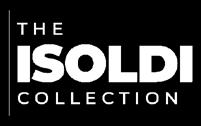2025 Mid-Year REPORT

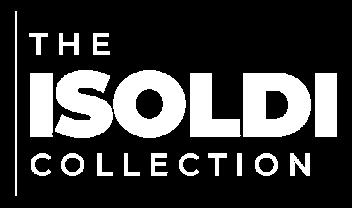
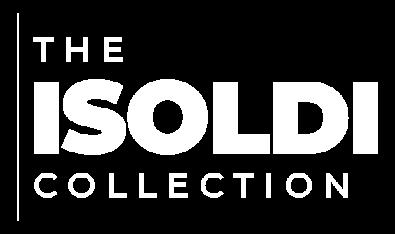






Welcome to The Mid-Year Report 2025.
We’re halfway through the year, and it’s certainly been a dynamic few months for real estate. The Mid-Year Report breaks down the latest data and trends, and I’d love to share what they might mean for your future property goals.
This year’s report draws on data from 120 U.S. markets and insights from Jessica Lautz, Deputy Chief Economist and Vice President of Research at the National Association of REALTORS®, Winston Chesterfield, Founder of UK-based Barton Consulting and from top Coldwell Banker Luxury Property Specialists. All combined, they offer a snapshot of where the high-end market is headed in the next six to 24 months.
Here is what you should know: Despite economic pressures, luxury real estate remains resilient. Prices are holding steady, even with more inventory hitting the market. Meanwhile, well-prepared homes in sought-after locations continue to attract serious buyers. Many affluent clients still see real estate as a safe, tangible investment, with all-cash purchases on the upswing. Meanwhile, equity gains and generational wealth transfers are bringing new, younger buyers into the luxury tier.
I remain confident in the resilience of the sector and stand ready to provide both local expertise and global perspective to guide your next steps.
If you’d like to discuss how these trends might impact your property or local market, please don’t hesitate to reach out.
Frank D. Isoldi
FRANK D. ISOLDI

• Sold Prices Are Consistently Rising. Luxury single-family median sold prices climbed 1.8% year-over-year and 8.0% over 2023. Luxury attached median sold prices rose 8.4% year-over-year and 16.5% compared to 2023, likely driven by demand for premium condos in trophy locations like New York City and Los Angeles. Median sold prices now stand at $1.7 million for luxury single-family homes and $1.25 million for luxury attached.
• Inventory Reaches Two-Year High. Compared to 2023, luxury single-family inventory is up 40.4% and attached inventory is up 42.6%. This, when measured against rising sold prices, highlights an anomaly: rising inventory is not causing widespread price reductions for high-demand properties, where the majority of sales are happening.
• Strong Fundamentals Bolster the Luxury Market, Led by Single-Family Homes. Sales activity remains healthy: single-family home sales climbed 1.7% year-over-year and 9.0% compared to 2023, reflecting steady demand despite greater supply. The attached segment did show softening in sales, likely due to more rate-sensitive buyers and less new inventory growth.
• Market Trending Toward Balance. Days on Market (DOM) remains stable at 31 days (single-family) and 28 days (attached). Sale-to-list ratios are holding strong at 98.1% (single-family) and 98.6% (attached), while sales ratios dipped to 17.2% (single-family) and 13.9% (attached) – signaling more negotiating room but no signs of distress.
• Real Estate Remains a Cornerstone. Over 68% of surveyed Luxury Property Specialists say affluent clients are maintaining or increasing their interest in real estate as an investment, and 96.1% report clients are keeping or increasing all-cash purchases – underscoring real estate as a trusted hedge amid stock market volatility.
• Two Buyer Profiles Are Emerging. Market dynamics point to a “tale of two buyers,” per surveyed Luxury Property Specialists: the “no-compromise buyer,” who is still willing to pay a premium but only for high-quality properties in prime real estate locations; and the “smart buyer,” more value-conscious and open to trade-offs on location, amenities, or renovation needs—as long as the numbers make sense.
• Behavioral Divides Emerge Between Wealth Brackets. When asked about the top trends in their markets, a significant number of Luxury Property Specialists noted that buyers across different wealth tiers are navigating the market in distinct ways. Ultra-wealthy buyers – more insulated by cash reserves and broader wealth portfolios – appear to be more active and ready to transact, while aspirationally wealthy buyers are showing more caution and price sensitivity as they weigh economic factors and long-term value.
• Practicality Prevails. About 47% of Luxury Property Specialists expect economic uncertainty to reduce lifestyledriven or speculative buys, as buyers focus more on practical factors like tax strategy, liquidity, and resale value.
• Equity Gains Are Creating New Luxury Buyers U.S. home prices have risen 47% over the past five years (NAR, March 2025), generating trillions in homeowner equity and propelling many move-up buyers into the luxury tier for the first time.
• The Generational Wealth Transfer is Accelerating. About 29.2% of surveyed Luxury Property Specialists see stable or rising Gen X activity, while 43.2% report increased Millennial and Gen Z buying – ushering in new luxury priorities focused on turnkey quality, sustainability, tech, and modern amenities.
• 2003-2024 NJ REALTORS ® Circle of Excellence Sales Award ® – Platinum Level
• New Jersey Monthly Magazine’s “Five Star Real Estate Agent”
• Coldwell Banker Global Luxury – member of the prestigious International Luxury Alliance Network as well as a Global Luxury Alliance Ambassador
• 2021 – President’s Award for Coldwell Banker NJ
• 2023 – Top Individual Agent by Sales Volume in Union County by the Wall Street Journal Real Trends Report
• 1/1/2014 – Present:
• #1 individual agent for Westfield closed listings
• Averaging just under 30 closed Westfield listings per year (29.1)
• Last Twelve Months:
• #1 individual agent for Westfield closed listings
• Average closed price = $1,184,900
• Vice President of the Connie Dwyer Breast Cancer Foundation
• Board member for the Trinitas Hospital Foundation
• Member of the Board of Trustees for The 200 Club of Union County


Frank D. Isoldi, a broker sales associate affiliated with the Westfield office of Coldwell Banker Realty in New Jersey and Rockland County, New York, has consistently been a top agent in the Westfield, NJ office and for Coldwell Banker in New Jersey. Isoldi has earned the NJ REALTORS® Circle of Excellence Sales Award® at the uppermost Platinum Level every year from 2003-2024. In addition, Frank has been consistently named a “Five Star Real Estate Agent” by New Jersey Monthly Magazine and has been chosen by Coldwell Banker Global Luxury as a member of the prestigious International Luxury Alliance Network as well as a Global Luxury Alliance Ambassador. Frank also received the prestigious President’s Award for Coldwell Banker NJ in 2021.
Frank demonstrates a tireless commitment to making every home buying and selling experience extraordinary. A lifelong resident and second-generation native of Westfield, Isoldi achieved these momentous accomplishments throughout his 30+ years of consistent sales success. Active in his community, Frank volunteers his time as the Vice President of the Connie Dwyer Breast Cancer Foundation and is a board member for the Trinitas Hospital Foundation and a member of the Board of Trustees for The 200 Club of Union County.

“In the world of luxury professionals, Frank defines the standard of excellence. Renowned for his unparalleled expertise, he embodies a rare blend of profound care and deep understanding. This unique combination is a true reflection of his character, both as a person and as a consummate professional.”
MICHAEL ALTNEU
Vice President, Coldwell Banker Global Luxury®
“We are proud to welcome Frank as one of Coldwell Banker Realty’s esteemed Global Luxury Ambassadors. As a consistently top-performing agent in New Jersey, he skillfully leverages the program to showcase Westfield’s most exceptional properties.”
KAMINI LANE
CEO, Coldwell Banker Realty
“Frank is a standout leader in luxury real estate and a role model for what it means to be the ‘best in the business.’ He brings incredible expertise and dedication to his clients, the community, the Coldwell Banker Realty brand, and our network of top luxury agents around the globe — setting the bar for luxury real estate in Westfield and beyond.”
RYAN M. SCHNEIDER
CEO and President, Anywhere Real Estate Inc.

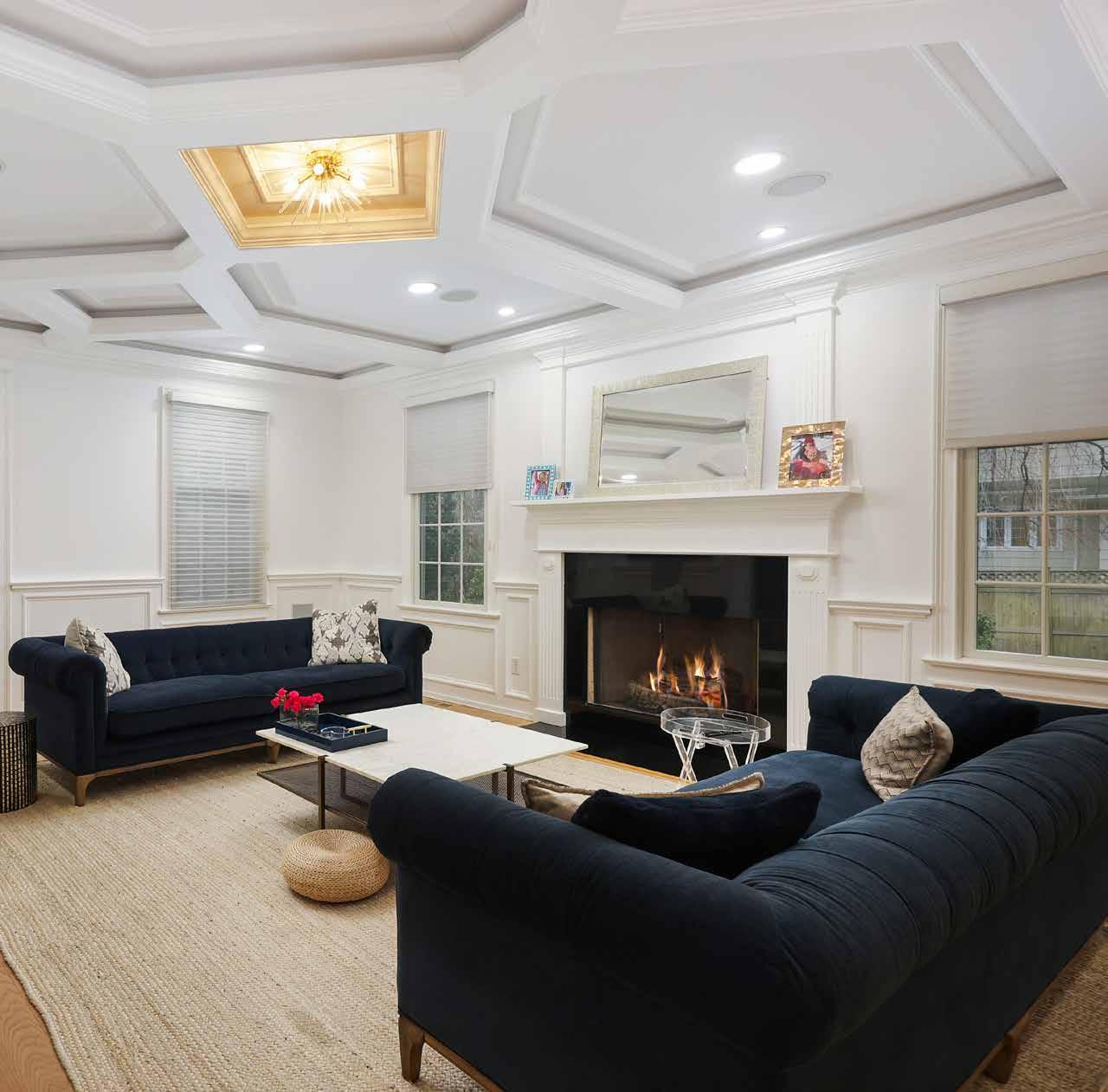
The Isoldi Collection represented the Seller
The Coldwell Banker® brand is a true global force, with the power to showcase exceptional properties and reach affluent buyers around the world. Through a master franchise network located in 45 countries, we are able to provide unmatched exposure for our clients’ properties.

96,000+ 2,600 45 AGENTS OFFICES COUNTRIES & TERRITORIES
The Isoldi Collection has partnered with Coldwell Banker Global Luxury® to provide an unmatched selling experience for our clients. This partnership provides our clients with access to the most powerful global network in real estate. Coupled with our longstanding relationships in the New York suburbs of Westfield, Scotch Plains, Mountainside and their environs, our clients’ properties will get unmatched exposure worldwide and locally to the most qualified buyers.
The Coldwell Banker Global Luxury® program redefines the world of luxury real estate marketing. The prestige of the Coldwell Banker® name, combined with state-of-the-art technology, bespoke marketing strategies and one of real estate’s most robust global networks encompassing 96,000 independent sales and associates in 45 countries and territories, culminates in extraordinary representation that crosses oceans, continents and language barriers.
The Isoldi Collection offers an impressive global stage from which to showcase your home. With the Coldwell Banker Global Luxury® program, we are truly borderless and come armed with a complete suite of tools designed to share the beauty of your home with an affluent audience at all times, no matter where they happen to be in the world.
The Isoldi Collection can instantly promote your property to the International Luxury Alliance. The Alliance is an elite network of over 76 real estate professionals from 48 key markets in the U.S. and abroad who are working with ultra-high-net-worth buyers. Combined, this group closes over $11 billion annually and has an average sales price of $4.5 million.
2,432
MARKET SUPPLY AND DEMAND | JANUARY – JUNE 2025
Twp. Cranford Twp.
Boro
Boro
Boro
City
During the first half of 2025, these New Jersey communities continue to demonstrate strong performance in their residential real estate market, with pockets of notable activity and price growth in towns like Westfield, Mountainside, and Scotch Plains. While broader economic uncertainty and elevated interest rates have cooled some housing markets across the country, all these communities continue to remain seller’s market, marked by rising home values, low inventory, and quick sales.
As of the end of June 2025, the median sold price continues to see an uptick, and although inventory is rising homes are still selling quickly, often in under three weeks. On average, nearly 78% of homes are selling above their list price, and the sale-to-list ratio hovers around 106%. These figures point to sustained buyer competition, particularly in highly desirable towns with strong school districts and commuter access to New York City.
Westfield remains the premier destination for high-end buyers in Union County, known for its strong schools, charming downtown, and commuter convenience. Buyer interest is steady and competitive, even as homes take slightly longer to sell — reflecting a thoughtful but still highly active market.
Mountainside stands out for its rapid price growth and limited supply, appealing to buyers seeking space, privacy, and exclusivity. With high demand and few listings, it has become one of the most competitive and fast-appreciating markets in the county.
Scotch Plains offers a more approachable option while still delivering solid value and appreciation. It continues to draw consistent interest from families and professionals, especially those looking for a balance between affordability and long-term growth potential.
Overall, the housing market is showing no signs of softening in these communities. While time on market has edged upward in certain towns, this is more a reflection of measured buyer strategy than market weakness. Most homes, particularly those that are move-in ready, well-located, and appropriately priced, continue to attract multiple offers. Demand is especially strong for homes with four or more bedrooms, renovated interiors, and proximity to commuter rail lines.
MOUNTAINSIDE | MARKET TRENDS JULY 2023 – JUNE 2025
$0 $200,000 $400,000 $600,000 $800,000 $1,000,000 $1,200,000 $1,400,000 $1,600,000
SCOTCH PLAINS | MARKET TRENDS JULY 2023 – JUNE 2025
$0 $200,000 $400,000 $600,000 $800,000 $1,000,000 $1,200,000 $1,400,000
$0 $200,000 $400,000 $600,000 $800,000 $1,000,000 $1 200 000 $1,400,000


At the beginning of the year, The Trend Report 2025 identified several key forces expected to shape the luxury real estate landscape: renewed market confidence, a surge of pent-up demand, and the growing influence of new power players like affluent Gen X and women. We also explored how lifestyle shifts, evolving design preferences, and global migration patterns were beginning to redefine the high-end real estate sector.
Now that we’ve reached the halfway point, it’s time to take the pulse of the market. Which forecasts are unfolding as expected – and which have been thrown off course by unforeseen forces?
Despite a complex economic backdrop, the global luxury property market has continued to show strength. Pricing has remained resilient for the most part. Inventory has gradually increased in several key markets. Overall sales are also trending higher for single-family luxury properties compared to the first five months of 2024. Real estate continues to serve as a cornerstone of high-net-worth financial portfolios – offering security, long-term value, and lifestyle utility.
That said, our early 2025 optimism has not played out as predicted. Higher home prices, higher mortgage rates, a volatile stock market, looming tariffs, and economic uncertainty have tempered a more full-scale rebound in market activity. These pressures have weighed most heavily on the aspirational affluent, who tend to be more interest-rate sensitive and reactive to financial volatility.
Conversely, ultra-wealthy buyers have responded quite differently. Rather than retreating, they’re transacting at the highest end of the market – driven in part by a desire to diversify out of equities and into real estate, which is seen as a safer, more stable asset class. We explore this emerging divide between affluent and ultra-affluent behavior in greater detail later in this report.
So far in 2025, we’re seeing a market that isn’t fully bullish or bearish – but rather recalibrating. Buyers are more discerning. Sellers are adjusting. Both are navigating an environment where practical considerations – such as home affordability, tax strategy, estate planning, property utility, and long-term investment potential – are now taking priority over softer lifestyle drivers like aesthetics, flashy amenities, or location cachet.
This could mark the return of what we might call “smart luxury” – a mindset shift where buyers’ choices are steered by discernment and strategy instead of pure indulgence.
This shift is showing up across the market – in who’s buying, what they’re buying, and where they’re buying it.

Leading this more strategic approach to buying are two groups we identified earlier this year: Gen X and affluent women. Dubbed “The Quiet Elite” in our January report, they’re proving to be anything but quiet this year.
As Jessica Lautz, Deputy Chief Economist and Vice President of Research at the National Association of REALTORS®, affirms later in this report, single women remain a powerful force in the housing market. Members of Gen X, meanwhile, continue to outpace all other age groups of high-net-worth homebuyers. What unites both demographics is a pragmatic, value-driven mindset. They are less swayed by thrills and frills, and more focused on long-term lifestyle alignment. They tend to be drawn to homes that offer multi-generational designs, wellness-focused features, flexible layouts, and turnkey condition in tax-friendly areas with temperate climates. And they’re willing to wait for the right property that checks all of these boxes.
At the same time, the search for lower taxes and better climates is driving affluent buyers to new destinations.
As we reported in January, cities like Dubai, Miami, and Singapore have risen in prominence for their compelling mix of affordability, economic opportunity, and climate appeal. Traditional luxury centers – New York, Los Angeles, Aspen, London, and Paris – remain attractive, but now face stronger competition from up-and-comers like Madrid, Perth, and Austin, especially among high-income earners looking to protect wealth.
Once again, these developments all point to practical considerations gaining ground on lifestyle aspirations among the wealthy.
In January, we called out personalization as one of the defining themes of 2025 – and largely, that still holds true. Affluent buyers continue to seek homes that reflect their values, support mental and physical well-being, and adapt to the way they live now, as well as in the future.
Properties featuring warm modernist design, indoor/outdoor merging, flexible layouts, and wellness amenities such as spa-like bathrooms and fitness studios, remain highly sought-after.

At the development level, builders have responded to the quest for personalization with more curated, experiencedriven concepts – but how many new projects will come to market over the next few years remains uncertain. With tariff volatility and growing economic caution, some developers are hitting pause on new construction.1 This pullback could further strain already tight inventory and drive up pricing – particularly for buyers seeking turnkey or experience-focused properties.
Many of the trends we identified at the start of 2025 are still in motion – but the road ahead is proving far more complex than anticipated. This Mid-Year Report reframes these early predictions in light of real-time market shifts, global uncertainty, and evolving buyer priorities, while also surfacing new insights that could influence the second half of the year.
Backed by on-the-ground intelligence from Coldwell Banker Global Luxury® Property Specialists and informed by top industry experts, this report offers a sharper view of where luxury stands today – and where it may be headed next.


Now at the halfway point of 2025, an in-depth analysis helps clarify the market’s current path and outlook.
The report examines luxury single-family and attached home performance for the first half of 2025, comparing key metrics to the same period in 2024.
• Total monthly sales
• Average monthly sales
• Median sold prices
• Inventory levels
• Sold price per square foot
• Average list-to-sold price percentages
• Days on market
• Sales ratio from 2023 to 2025
By comparing these metrics, we were able to uncover key trends driving the luxury housing market on a year-over-year and month-to-month basis.
| JANUARY - MAY 2023 TO 2025
Overall, results from the first five months of 2025 show that the luxury single-family market is outperforming 2024:
• Inventory increased by an average of 19.6% monthly, reaching a 21.8% increase year-over-year gain in May.
• Sales volume averaged a 1.7% increase, but dipped 4.7% year-over-year in May.
• Median monthly sold price rose by 1.8% on average, with May up 3.0% year-over-year.
• Properties continued to sell close to list price, averaging 98.1%, with May at 98.6%.
• Average days on market held steady at 31 days.
• The luxury single-family market remained balanced, averaging a 17.2% market status sales ratio, ending May at 19.4%.
Source: Institute for Luxury Home Marketing
MARKET STATUS SALES RATIOS | JANUARY - MAY 2023 TO 2025
The first five months of 2025 show higher prices but lower sales volume for the luxury attached market compared to 2024:
• Inventory increased by an average of 14.8% monthly, with May seeing a 12.9% increase year-over-year.
• Sales volume fell 8.1% on average, with May down 21.1% year-over-year.
• Median monthly sold price rose by 8.4% on average, with May up 5.0% year-over-year.
• Sold price per square foot rose 3.8% on average, but dipped 4.0% year-over-year in May.
• Properties continued to sell near to list price averaging 98.6%, with May at 98.7%.
• Days on market averaged 28 days, down one day compared to 2024.
• The luxury attached market remained balanced, averaging a 13.9% market status sales ratio, ending in May at 15.4%.
Market Status Sales Ratio defines market speed and market type: Buyer's <12%; Balanced >12 to < 21%; Seller's >21%. If >100% MLS® data reported previous month’s sales exceeded current inventory. Source: Institute for Luxury Home Marketing
Source: Institute for Luxury Home Marketing

What the Numbers Reveal About Today’s Luxury Market Trends

As we move through the first half of 2025, the luxury real estate market has proven to be anything but predictable. Early-year enthusiasm has been tempered by economic uncertainty, stock market volatility, and more cautious consumer behavior.
Given the outsized influence of these external factors, we tracked sales, inventory, and pricing month by month from January to May 2025 to see how they’re impacting the luxury residential market as a whole.
Here’s a closer look at how these dynamics are unfolding so far this year.
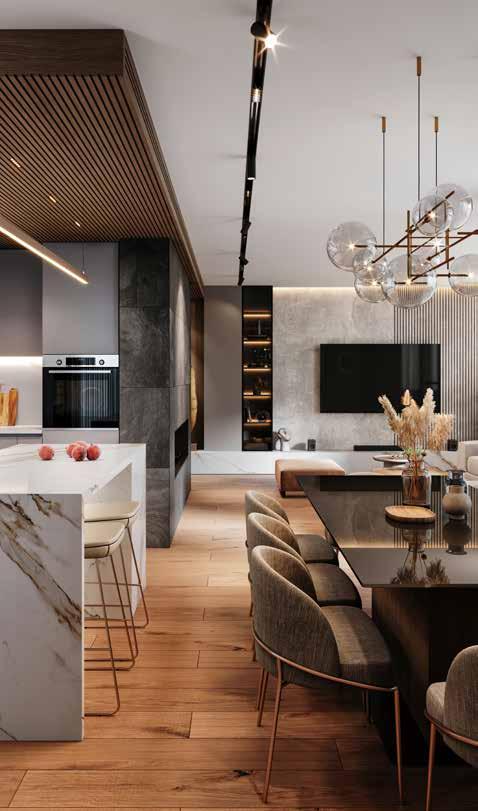
SALES & INVENTORY: A MONTH-BY-MONTH RIDE
January: Optimism Fuels a Strong Start
A wave of optimism ushered in the new year. Anticipation of lower interest rates, a political tone favorable toward real estate, and increased listing activity drove many buyers off the sidelines. What resulted was a major surge in both new listings and closed transactions.
Single-Family Home Sales:
Single-Family
Attached Property Sales:
Attached
February: The Tariff Effect Slows Momentum
vs. 2023
Talks of global and cross-border tariffs – especially those impacting building materials—triggered hesitation in the market. Inventory gains slowed, and buyer activity cooled in response.
Single-Family Home Sales:
Attached Property Sales:
vs. 2023
vs. 2023
Attached Property New Inventory: +2.5% vs. 2024 +35.2% vs. 2023
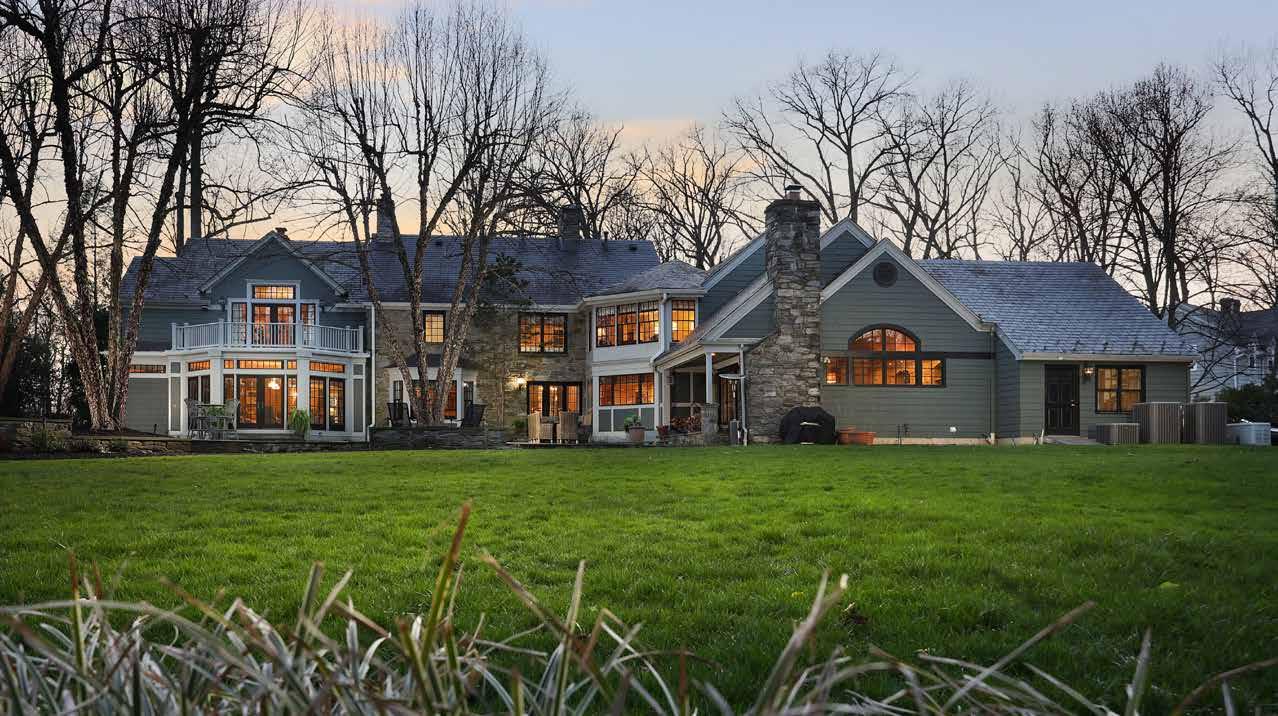
March: A Rebound for Single-Family Homes, But Not for Attached
Delayed activity from February helped fuel a bounce in single-family homes, but the attached segment faltered – likely a sign of growing price sensitivity.
Single-Family Home Sales:
+5.8% vs. 2024 +2.8% vs. 2023
Single-Family Home New Inventory: +2.8% vs. 2024 +37.2% vs. 2023
Attached Property Sales: -13.4% vs. 2024 -20.7% vs. 2023
Attached Property New Inventory: +14.9% vs. 2024 +21.8% vs. 2023
Despite a sharp dip in the stock market in early April, single-family home sales held steady – remaining essentially flat rather than declining. This may suggest that luxury buyers still view real estate as a safe, long-term investment, even if some temporarily paused their plans. Meanwhile, attached homes continued to underperform.
Single-Family Home Sales: -1.9% vs. 2024 +18.2% vs. 2023
Single-Family Home New Inventory: +23.7% vs. 2024 +49.3% vs. 2023
Attached Property Sales: -11.6% vs. 2024 +10.4% vs. 2023
Attached Property New Inventory: +5.5% vs. 2024 +27.0% vs. 2023
Since many April deals were likely set in motion before the spring stock market dip, May marked the first month to reflect its full impact. Early signals appear to be mixed – some buyers pulled back, while other reports are of a mid-month1 rebound in consumer confidence in some areas.
Single-Family Home Sales: -4.7% vs. 2024 -0.5% vs. 2023
Single-Family Home New Inventory: +10.4% vs. 2024 +33.4% vs. 2023
Attached Property Sales: -21.1% vs. 2024 -15.9% vs. 2023
Attached Property New Inventory: -1.8% vs. 2024 +11.5% vs. 2023
While June’s data will bring sharper clarity, the January to May figures already point to a fresh wave of luxury real estate trends beginning to emerge.
In this new landscape, the property type matters. Sales of luxury single-family homes not only outpaced attached home sales by 9.8% in the first five months of 2025, but also exceeded singlefamily home sales from the same period in both 2024 and 2023.
Single-Family Home Sales: +1.7% vs. 2024 +9.0% vs. 2023
Attached Property Sales: -8.1% vs. 2024 -3.4% vs. 2023
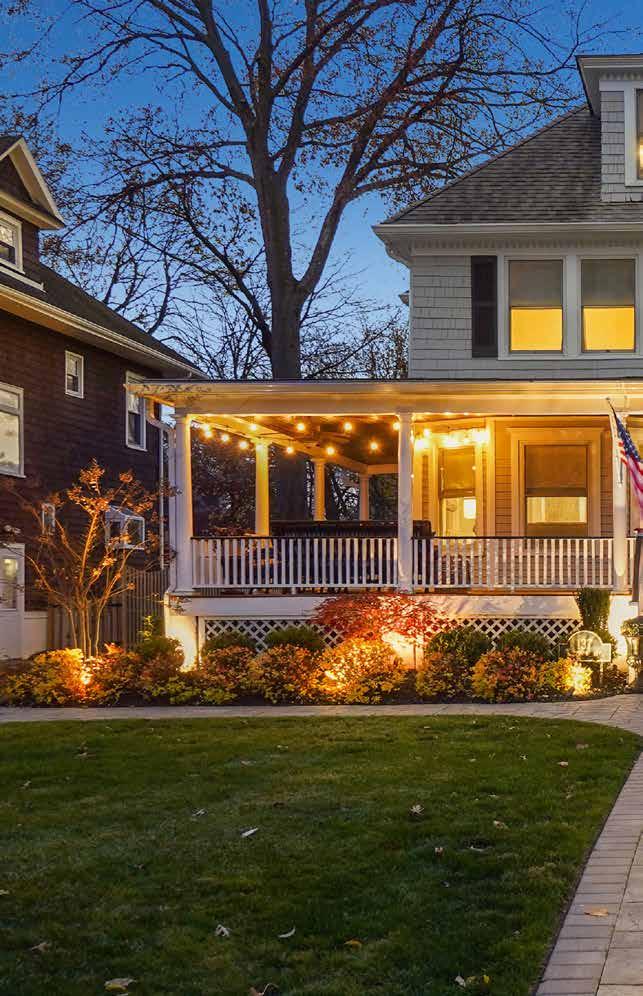
Source: Institute for Luxury Home Marketing
Underscoring the strength of the single-family home segment: sales could have been even higher if not for external headwinds like tariff concerns, stock market volatility, and stalled interest rate cuts.
Could this performance gap between property types reflect a broader shift between aspirational wealthy and ultra-wealthy buyers? We explore this further in The Trend Outlook. About 20.4% of surveyed Luxury Property Specialists report they’re beginning to see a split – where aspirational buyers remain cautious, while ultra-luxury buyers continue to stay active.
• Single-family home sales, while outperforming attached properties, have followed a bumpier path in 2025 compared to 2024 and 2023 when the market followed a steady build-up of momentum through the spring buying season.
• Rate-sensitive affluent buyers – perhaps more likely to be drawn to attached properties – appear to be waiting for clearer economic signals before reentering the market.
• Demand for attached homes remains soft overall, with the exception of marquee markets like New York, Miami, Los Angeles, and Aspen, where ultraluxury condos continue to draw affluent buyers.
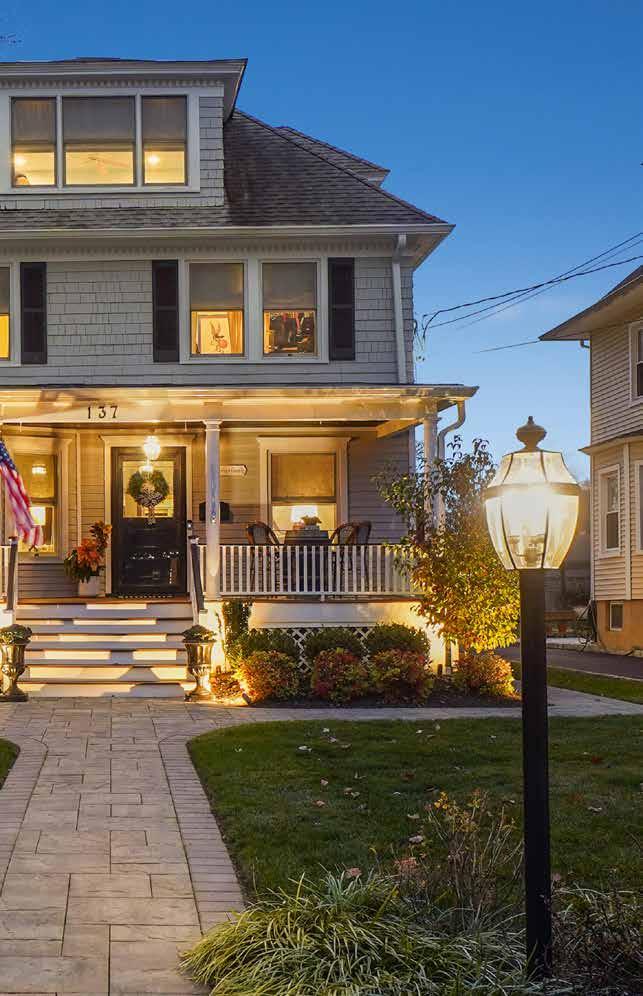
One of the most consistent themes of 2025 has been the slow and steady rise in luxury housing inventory – a trend that began in early 2023 but has gained notable traction over the last 6-8 months.
Single-Family Home
Inventory: +19.6% vs. 2024 +40.4% vs. 2023
Attached Property
Inventory: +14.8% vs. 2024 +42.6% vs. 2023
Attached inventory has grown more modestly in the last year, a sign that this segment is more rate-sensitive and slower to react outside of high-end condo markets like New York.
Our survey data supports this trend in real time. It was the second most-cited trend among surveyed Luxury Property Specialists, with 18.4% reporting that increased inventory is currently giving buyers more choices and fueling fresh activity in their markets.

Home Inventory A ached Property Inventory
Source: Institute for Luxury Home Marketing
Sellers appear to be adjusting to the new reality: interest rates remain elevated, but prices aren’t falling either. This shift became
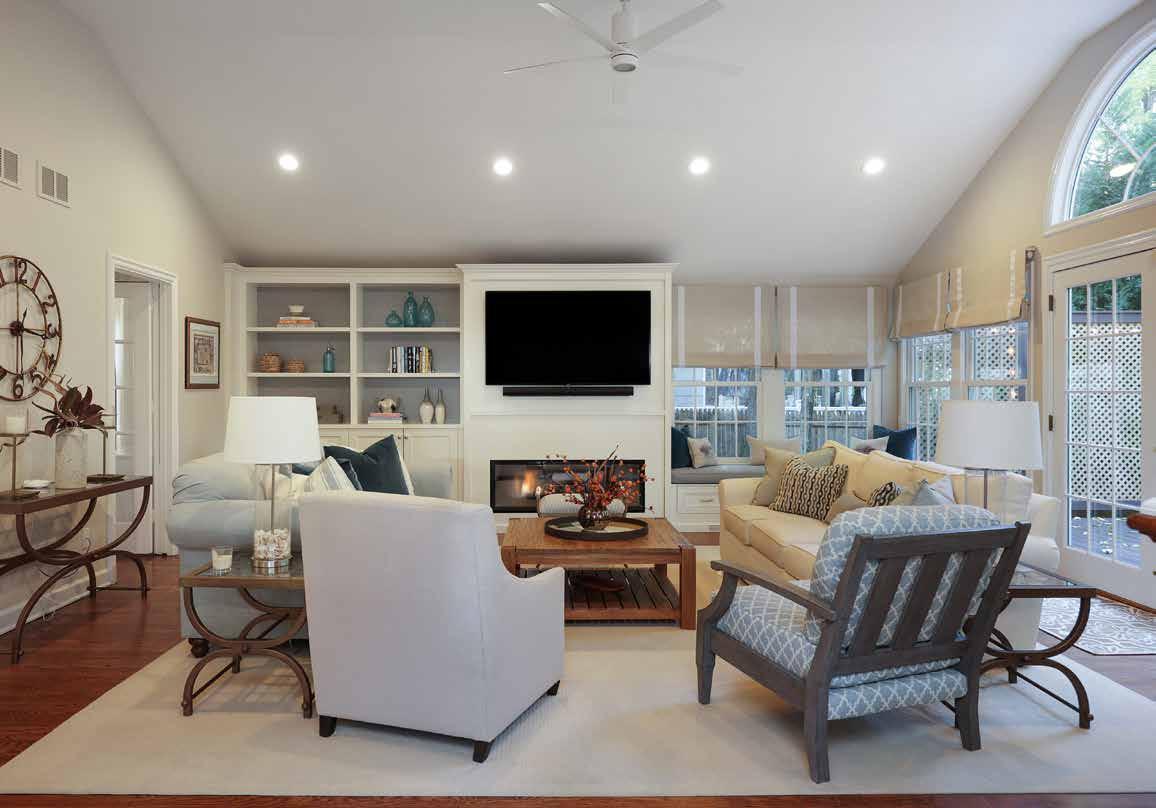
even more pronounced in April and May following President Donald Trump’s tariff announcement, which triggered a stock market selloff. Many Luxury Property Specialists report that their seller clients are already responding by adjusting listing prices or offering concessions to attract buyers. “I feel that people are adjusting to the new norm of interest rates and finally moving, as sales prices are leveling out to a decent affordable amount,” said Pam Hanson, an independent sales associate affiliated with Coldwell Banker Apex, Realtors in Waco, Texas.
Crucially, the gradual rise in inventory has allowed the market to adjust in a healthy, measured way – avoiding dramatic swings that might trigger overreactions from buyers or sellers. (In the past, sharp increases have sometimes sparked sudden demand surges followed by renewed price escalation, fueled by ongoing pent-up interest in luxury properties.) Interestingly, some agents suggest that the growing number of available homes may have more to do with existing listings lingering on the market than a surge of new inventory. “Listing choices are increasing based on longer days on market, not necessarily more listings,” observed Monique Kaldy with Coldwell Banker Realty in Monterey, California.
• Inventory growth has been gradual, enabling healthy absorption.
• Sellers are adjusting to today’s interest rates and pricing expectations.
• Attached property inventory is expanding more slowly, reflecting buyer sensitivity to financing.
• Extended days on market may be a quiet contributor to perceived inventory growth.
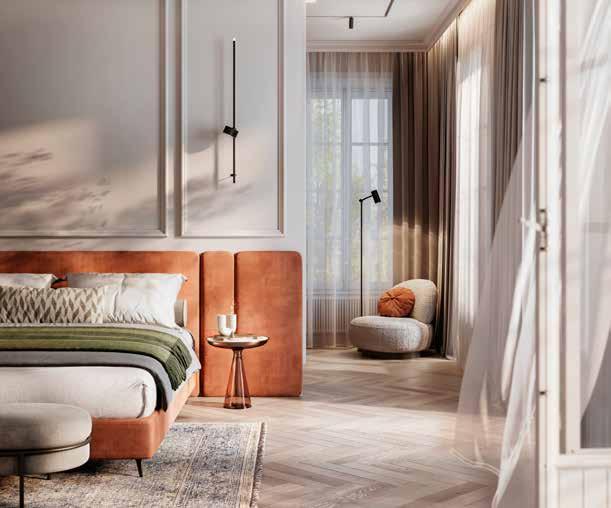
Despite market fluctuations, luxury sold prices have shown impressive stability. While areas with higher inventory have felt slight downward pressure, the luxury median sold price overall continues to inch upward – bouyed by strong competition for high-quality properties in top locations, often in short supply.
Single-Family Home Prices: +1.8% vs. 2024 +8.0% vs. 2023
Attached Property Prices: +8.4% vs. 2024 +16.5% vs. 2023
Single-family sold prices rose with the composite median increasing from $1.57 million to $1.7 million. Attached homes saw even sharper gains, with the median price rising from $1.078 million to $1.25 million. These jumps likely reflect higher-end condo sales in cities like New York, Miami, and Aspen – despite fewer total sales.
Besides sales, prices, and inventory, other metrics point to a more balanced market for luxury buyers and sellers. Days on Market has remained remarkably consistent over the past three years, suggesting a steady pace of sales and a well-calibrated buyerseller dynamic.
For single-family homes, days on market has hovered around the 30s – rising from 27 days in 2023 to 31 in 2024 and 2025. Attached properties have followed a similar trajectory, rising from 28 in 2023 to 29 days in 2024, before returning to 28 days in 2025.
Meanwhile, sellers are still commanding strong prices. The saleto-list price ratio (SP/LP%) – a key indicator of pricing power – has edged upward for both segments. Single-family homes have seen a climb from 97.9% in 2023 to 98.1% this year, while attached homes have been holding firm at 98.6% for two consecutive years.
Price per square foot has also continued its slow and steady ascent. In 2025, the average price per square foot in 120 markets for single-family homes reached $486, up from $484 in 2024 and $466 in 2023. Attached homes, often concentrated in highdemand metro areas, saw a more dramatic rise – from $569 in 2023 to $633 in 2025.
The only indicator showing signs of softening is the sales ratio* – a measure of market competitiveness. For single-family homes, the ratio has gradually declined from 22.1% in 2023 to 17.2% this year. Attached properties show a similar trend, dipping from 20.5% to 13.9% over the same period. While this downward shift signals more breathing room for buyers, it also reflects a market moving toward balance. With demand still strong and pricing metrics holding steady, luxury real estate remains a resilient asset class even if there is more room at the negotiating table.
• Luxury buyers are still transacting – and spending.
• A shortage of top-tier inventory is keeping prices elevated.
• Unique, legacy, and trophy properties continue to attract investment.
Source:
As Vanessa Cantu, an independent sales associate with Coldwell Banker Apex, Realtors in McKinney, Texas, put it: “Wealthy buyers aren’t driven by interest rates or taxes. If they want or need a home, they’ll buy – and they almost always prefer turnkey.”
TRENDING TOWARD BALANCE
• We explore this pricing trend in more detail later in the report, as it’s also fueling the rise of a new buyer segment: move-up buyers entering luxury real estate for the first time.
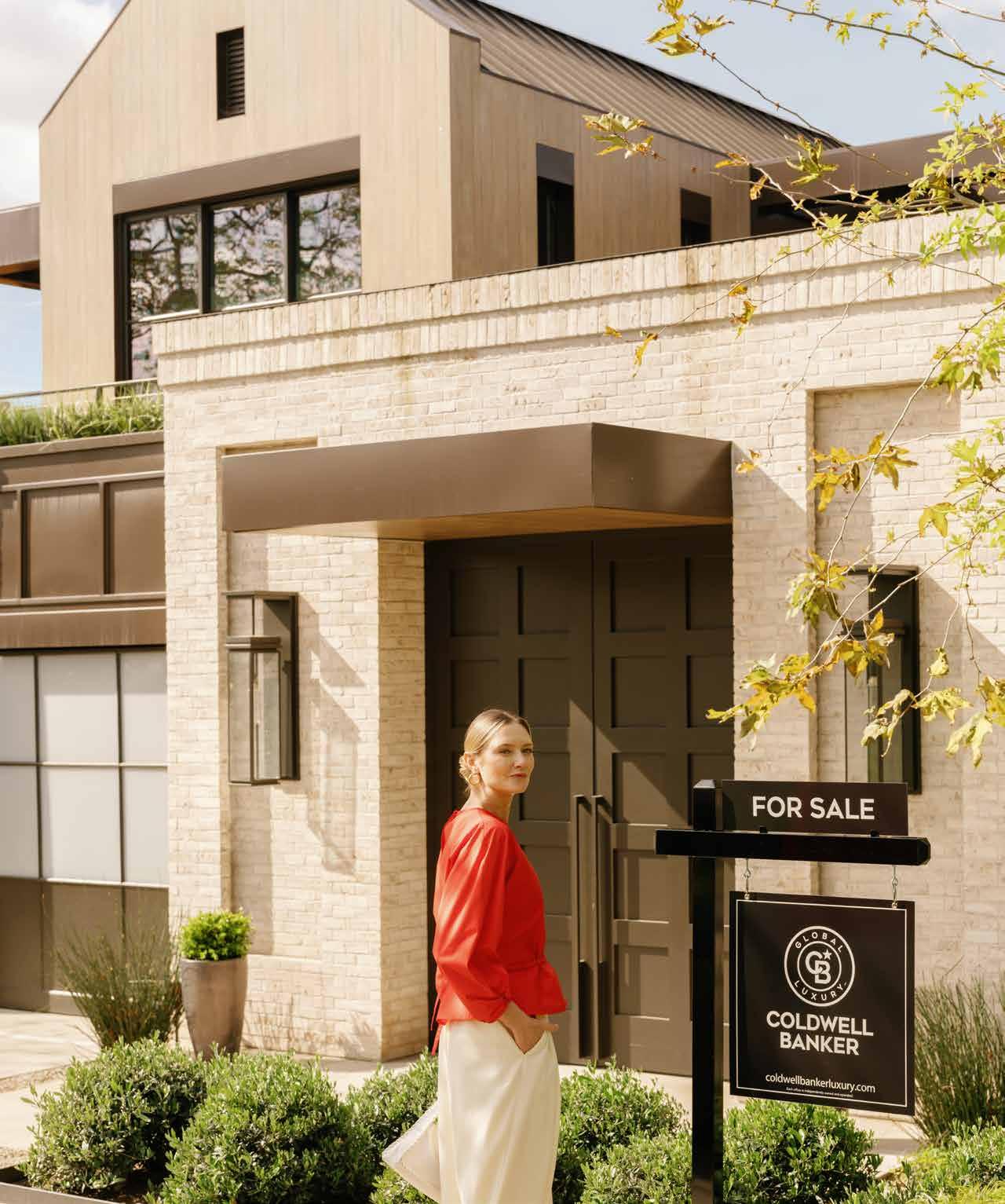

How are luxury real estate professionals reading the market as we move through 2025? To find out, we asked more than 200 Coldwell Bankeraffiliated agents with the Luxury Property Specialist certification from around the world to share their outlooks on pricing, inventory, affluent buyer and seller behavior, and overall confidence in the market.
Despite ongoing economic headwinds – from inflation to global political uncertainty – confidence in the market remains strong. A clear majority of surveyed Luxury Property Specialists reported feeling confident in the luxury sector’s overall health, suggesting that resilience is still a defining trait of the luxury sector. As Jessica Lautz, Deputy Chief Economist and Vice President of Research at the National Association of REALTORS® (NAR), told us: “The luxury market – particularly homes priced at $2 million and above – is outperforming lower price tiers. Luxury buyers feel more financially secure in making high-end purchases. Many are pulling money from the stock market and reallocating it to real estate, viewing it as a more stable investment.”
This sense of optimism is echoed in our survey data. Most respondents described a market that’s finding its equilibrium. They expect steady pricing, gradual inventory growth, and ongoing demand from affluent buyers who can afford to play the long game with real estate.
What follows is a snapshot of where the luxury market stands today – and where it may be headed next.
CONFIDENCE BAROMETER
A majority of surveyed Luxury Property Specialists (59.3%) reported feeling somewhat or extremely confident about the overall health of the market – a sign of resilience despite shifting conditions.
Many agents acknowledge that the market is in flux – driven more by shifting financial confidence among the world’s wealthiest buyers. Still, luxury real estate continues to be viewed as a secure long-term investment.
One potential silver lining to the recent market volatility? It may encourage anxious investors to move away from stocks and toward high-end real estate. As Winston Chesterfield, founder of U.K.-based Barton Consulting, told us: “Real estate can be a place to park money, and when the world feels uncertain, we often see an interest in home and real estate purchases.” Jessica Lautz, Deputy Chief Economist at NAR, agreed, telling us for this report: “With the recent volatility in the
stock market, the affluent may be looking to diversify their assets and invest in real estate since they view it as a more secure asset.”
The majority of Luxury Property Specialists anticipate that prices will either remain stable (44.7%) or increase slightly (18.0%) for
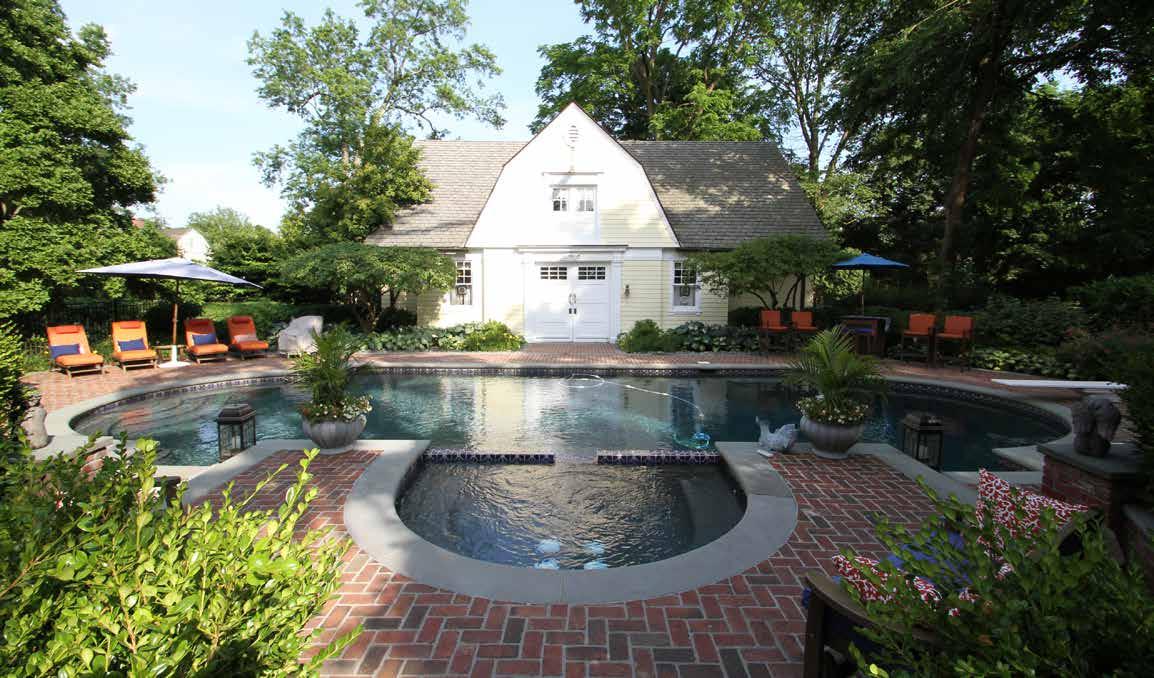
the rest of 2025. Just under 30% predict a slight decrease, while only a small percentage expect either significant increases or decreases.
This expectation is underscored by the current median sold price as of May 2025:
• In May, the luxury single-family home median sold price of $1,700,000 was up 3.0% from a year earlier, and $1,260,000 for attached properties up 5.0% year-over-year.
• The typical luxury home sold in 21 days, virtually unchanged from 19 days a year ago for single-family homes and 23 days compared to 22 for attached properties.
BOTTOM LINE: The consensus suggests a leveling out of luxury home values, with modest fluctuations driven by local market dynamics rather than dramatic shifts.
When asked how they expect inventory to trend for the remainder of the year, half of Luxury Property Specialists surveyed said they anticipate a slight increase. Another 34.0% expect overall inventory levels to remain stable, while only 9.7% foresee a decrease. This expectation is underscored by the current inventory level and new inventory increases to date in 2025:
• The average monthly inventory level increases since January have been 9.8% for single-family homes and 4.3% for attached properties.
• Monthly new inventory levels increased on average by 8.9% for single-family homes but fell slightly by 0.5% for attached properties.
BOTTOM LINE: These findings suggest that many sellers are adjusting to current market conditions as inventory levels continue to increase.
WHERE PRICES ARE HEADED NEXT
WHERE INVENTORY IS HEADED NEXT
Source: Coldwell Banker Global Luxury® Property Specialist Survey 2025
GO DEEPER
Read on for insights into what’s shaping luxury buyer and seller decisions today – from shifting sentiment to broader financial forces –and why confidence in the market remains high.
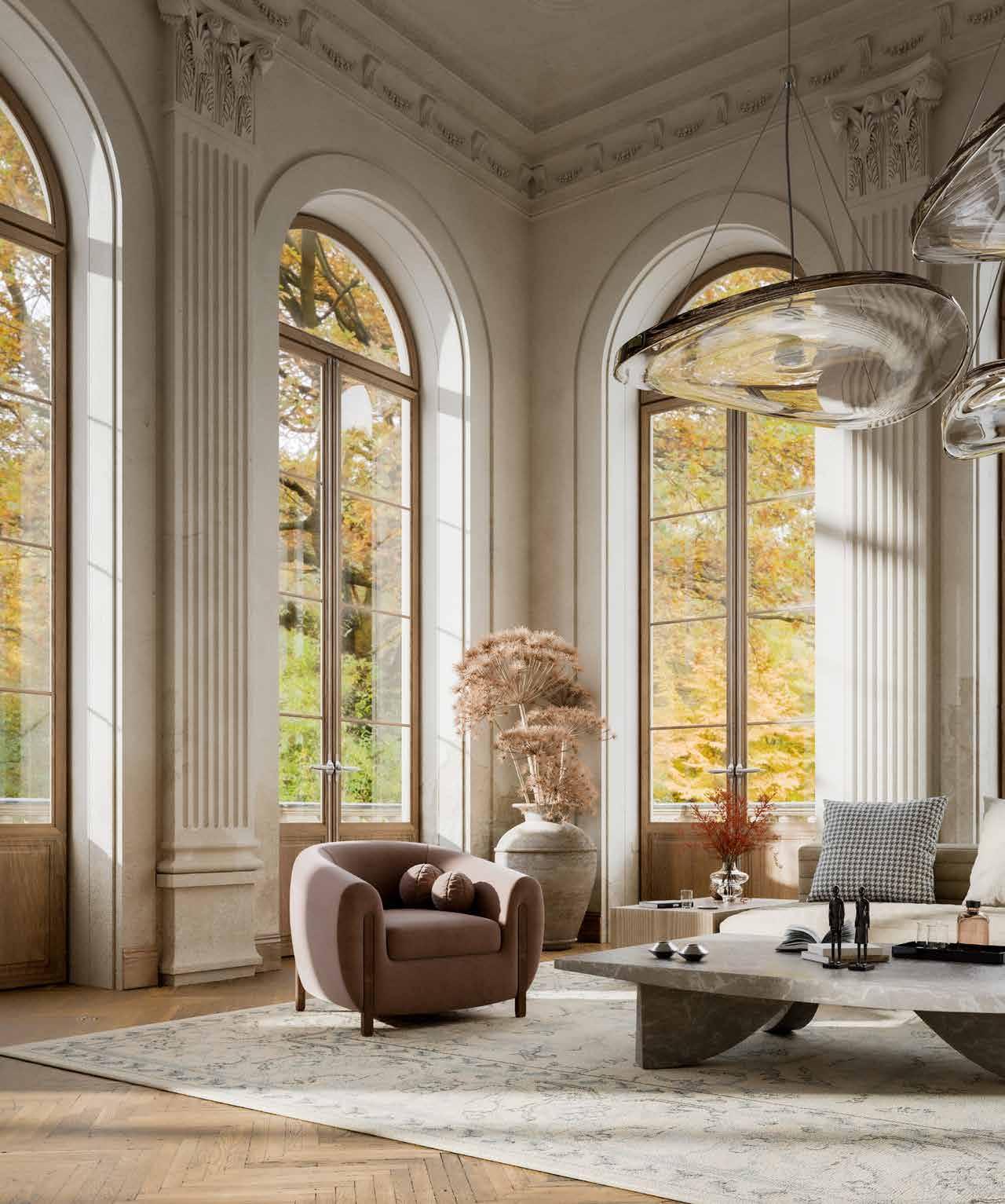
What’s Driving Luxury in the Next Six Months and Beyond


DR. JESSICA LAUTZ
Deputy Chief Economist and Vice President of Research at the National Association of REALTORS®

WINSTON CHESTERFIELD
Founder of U.K.-based Barton Consulting
Halfway through the year, one thing is clear: the market is in flux, and several notable patterns are emerging.
This year, we took a broader approach – analyzing both financial market influences and shifting buyer behavior to better understand their combined impact on luxury real estate. In addition to surveying more than 200 Coldwell Bankeraffiliated agents with Luxury Property Specialist certification, we consulted two leading experts: Dr. Jessica Lautz, Deputy Chief Economist and Vice President of Research at the National Association of REALTORS®, and Winston Chesterfield, founder of U.K.-based Barton Consulting and a recognized authority on affluent consumer behavior.
Together, these insights highlight the key forces driving the high-end market today and the larger behavioral shifts likely to shape it over the next two years.
Luxury Property Specialists have identified several drivers expected to shape the market for the second half of the year. Among them, three stood out. First, luxury buyers continue to view real estate as a long-term investment – even if some are pausing on immediate decisions. Second, buyers are more selective than ever, though the current climate may offer new opportunities for value-driven “smart luxury” purchases. And third, a clear behavioral divide is emerging between aspirational buyers and the ultra-wealthy, who are navigating today’s economic uncertainty with very different approaches.
1. No Compromises Buyers want homes that fit their lifestyle perfectly – and aren’t settling.
2. Split Behavior Cautious aspirational buyers; confident ultra-luxury buyers.
3. Inventory Up, Activity Rising More options are driving sales.
4. Rates Still Rule Interest rates continue to shape decisions.
5. Politics & Taxes Matter
External forces are influencing when and where buyers move.
Nearly 68% of Luxury Property Specialists say their affluent clients are maintaining – or increasing – current real estate exposure, pointing to a steady confidence in the asset class. Only 11.3% report clients are decreasing their investment interest in real estate in favor of other financial instruments.
“The stock market can be highly reactionary, and many affluent buyers are looking to diversify their portfolios,” noted Lautz. “Anecdotally, we’re hearing from Realtors that their clients are reallocating funds from stocks into tangible real estate assets.”
This sentiment is echoed on the ground by top-producing agents in key luxury markets. Jade Mills, a leading agent with Coldwell Banker Realty in Beverly Hills who surpassed $9 billion in career sales last year, says it holds true among L.A.’s wealthiest buyers.
CURRENT LEVEL OF REAL ESTATE INTEREST AMONG AFFLUENT CLIENTS
Increasing interest – seeing real estate as a more a rac ve asset class
Plans on hold due to economic or stock market uncertainty
Majority are maintaining current real estate exposure
Decreasing interest – alloca ng more to equi es and financial instruments
“I’ve had clients with budgets up to $40 million who are actively looking,” Mills explains. “Several have said that if they find the right property – one that feels like a good fit and a good value – they’re ready to pull money from the stock market because it seems more volatile right now. They still view real estate as a solid investment.”
In Austin, Texas, Tamara Mortiz, with Coldwell Banker Realty, sees similar behavior among her clients: “Stock market stability will continue to factor into the buyer experience, as buyers shift their investments into more stable products such as real estate.”
The Correlation Between Real Estate and Financial Markets
These insights reflect the complex connection between luxury real estate and the broader financial markets. When wealth expands – driven by gains in equities, crypto, or private markets – discretionary real estate purchases like second homes often follow. Conversely, when uncertainty rises, affluent buyers tend to recalibrate, viewing real estate as both a safe haven and a strategic diversification tool.
One reason: real estate historically has a low – or negative –correlation with stocks. In other words, it doesn’t necessarily move in tandem with the stock market, which makes it an attractive hedge during periods of volatility. According to J.P. Morgan Asset
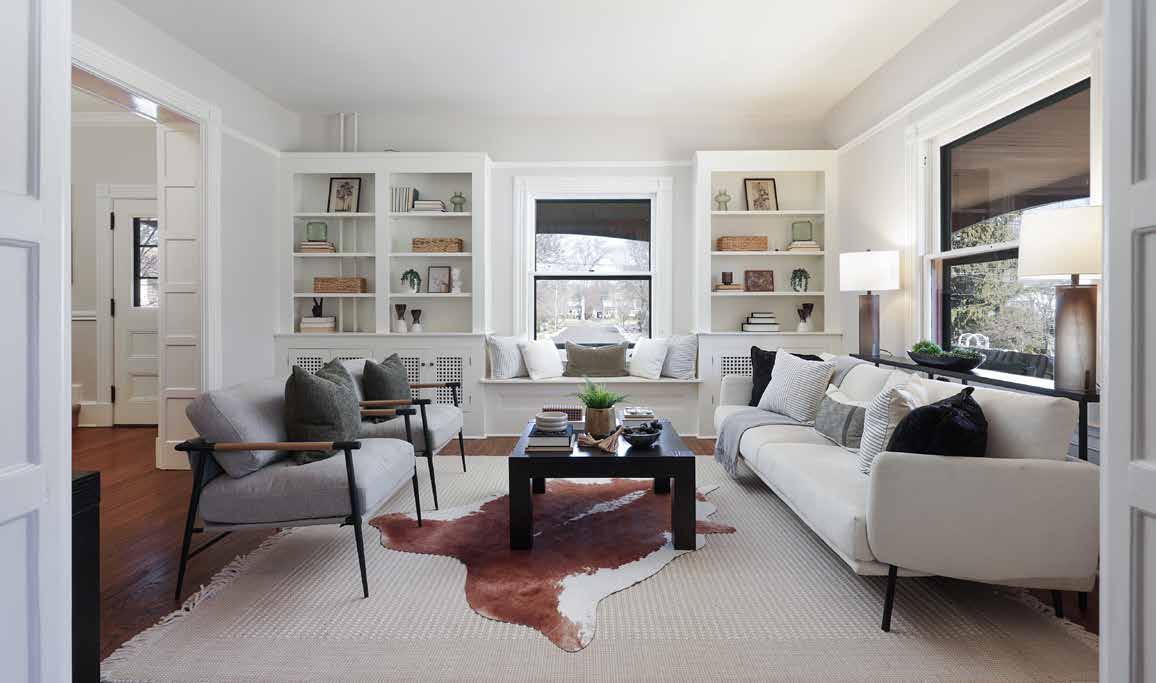
Management’s Q2 2025 Guide to the Markets,1 as of late 2024, direct real estate and equities are more disconnected than they’ve been in years, reinforcing real estate’s role as a stabilizing force within a diversified portfolio.
NUMBER OF CASH PURCHASES
Source: J.P. Morgan Asset Management
The role of real estate as a preferred, stable asset class in highnet-worth portfolios is reinforced by their growing preference for using liquid funds rather than borrowing money at higher rates.
About half of the surveyed Luxury Property Specialists reported a slight or substantial increase in cash purchases this year. When combined with those who saw no change, a striking 96.1% said their clients are maintaining or increasing their use of cash. This tracks with NAR’s findings. “Currently, 31% of repeat buyers of primary residences are purchasing with all cash – up from 19% pre-pandemic,” according to Lautz.
Source: Coldwell Banker Global Luxury® Property Specialist Survey 2025
Primary sources of funds may include personal savings, stock portfolios, or proceeds from another property sale – a sign that real estate continues to be seen as both a lifestyle and financial asset. Wealthy buyers, who are often on their second or third home transaction, may also use financing strategies that help minimize the impact of higher mortgage rates.
87.4%
of surveyed Luxury Property Specialists reported that their clients’ primary sources for funds were personal savings, investment portfolios, or proceeds from the sale of another property.
“About 21% of first-time buyers are using financial assets like stocks, crypto, or IRAs,” says Lautz. “Among first-time buyers, 9% are paying all cash, often with assistance from family. We're starting to see inheritances play a larger role in financing transactions. 7% are relying on inheritances and 25% are using gifts or loans from family and friends."
The reasons people are selling remain largely traditional: 63.4% of surveyed Luxury Property Specialists cited lifestyle changes such as downsizing or upsizing, while 21% pointed to relocation for work or personal reasons. “As always, life events – births, deaths, divorces, diplomas, and diapers – continue to drive activity, even at the highest price points,” says Melinda Davala Sarkis of Coldwell Banker Realty in Rancho Santa Fe, an upscale enclave in North San Diego County.
The fact that the majority of luxury home sales are driven by personal milestones, and not financial necessity, suggests that high-net-worth individuals see value in holding real estate long-term.
According to Realtor.com,2 real estate value made up just 18.7% of total assets among the wealthiest 10% of U.S. households in 2024, down from just under 20% two years prior. At the same time, corporate equities – such as futures, mutual funds, and other financial instruments – accounted for over one-third of household assets, marking their largest share on record.
Downsizing, upsizing, or lifestyle changes
Reloca ng for work or personal reasons
Mone zing assets due to economic uncertainty
Tax implica ons, estate planning, or inheritance considera ons
Perc eived future market downturn
Other
Since real estate represented a smaller slice of affluent portfolios, some experts speculate that there could be untapped growth potential in the luxury housing sector this year. “The combination of significant stock market wealth and relatively low debt in real estate among the wealthiest 10% suggests that this cohort has more capacity for real estate investment,” noted Realtor.com Chief Economist Danielle Hale earlier this year.
Source: J.P. Morgan Asset Management
It should be noted that many seasoned investors take advantage of periods when public confidence in the economy is low – often using that pessimism as a buying opportunity. History shows that the lower the sentiment, the stronger the subsequent returns – a pattern that has repeated across multiple economic cycles.
Per J.P. Morgan second quarter figures, consumer sentiment is very low – 52.2 – well below the long-term average of 84.3. This low reading suggests we're near a sentiment trough, which has historically been a bullish signal for future stock market returns. The last comparable low was June 2022, and the market rose 17.6% in the 12 months that followed.
Even though many people feel uncertain about the economy right now, history suggests it could be one of the best times to invest – and some luxury “opportunity” buyers appear to be acting accordingly. Mills confirms this trend in Los Angeles: “Some buyers are picking up two or three homes as speculative investments, especially in the $6 to $10 million range, because they see this as a good time to buy since the market is not as robust as it was a few years ago.”
THE NO-COMPROMISE BUYER MEETS THE SMART BUYER
Luxury buyers are holding fast to their wish lists. This trend has been a defining feature of the high-end real estate market over the past few years. In 2025, it remains just as strong. With affordability pressures from elevated interest rates and persistently high pricing, fewer buyers are willing to compromise on lifestyle preferences, property condition, or luxury features.
Indeed, the majority of surveyed Luxury Property Specialists identified this "no-compromise" mindset as the top current trend.
“Although my buyer clients might be somewhat cautious, they continue to expect property upgrades that support their luxury lifestyle,” says Rhonda Harmon of Coldwell Banker High Country Realty in South Carolina. Adds Judy Oriel of Coldwell Banker Realty in the Greater Boston area: “Unless the property is spectacular and a 'dream house,' there is no urgency.”
The Turnkey Effect on Inventory
According to Lautz, the no-compromise trend is largely driven by two groups: Baby Boomers who are downsizing but don’t want to
settle, and younger buyers entering the market with generational wealth – often moving directly from their parents’ homes. “Heavily influenced by what they see on HGTV and social media, these buyers are less satisfied with the homes they’re seeing on the market and expect high-quality inventory,” she explains. “This is placing more pressure on sellers to present move-in-ready properties and on agents to deliver full-service support. We're seeing steeper price reductions for homes that aren’t updated, and bidding wars continue for those that are priced competitively.”
Luxury buyers’ increasingly high standards may be contributing to the higher inventory levels seen in 2025. Homes requiring renovation or cosmetic updates tend to linger longer on the market, while turnkey properties that align with buyers’ specific needs – and are priced appropriately – continue to sell in under 30 days, according to Lautz. “We are still seeing bidding wars for competitively priced homes,” she notes. However, she also points out that inventory is only now catching up to pre-pandemic levels. “We’re only now matching inventory levels from February 2020, but we remain short by approximately 5 million units nationally.”
“We’re seeing steeper price reductions for homes that aren’t updated – and bidding wars for those that are priced competitively.”
— JESSICA LAUTZ, DEPUTY CHIEF ECONOMIST, NAR
The preference for turnkey is especially pronounced in Manhattan, where many luxury pied-à-terre buyers prioritize fully furnished, designer-curated homes in pristine condition, says Andrea Saturno-Sanjana of Coldwell Banker Warburg. “Often, saving time and avoiding everyday hassles are the real luxuries.”
This dynamic is creating a feedback loop: selective luxury buyers could be driving up inventory levels, but the added supply is also raising their expectations even higher. “As more homes continue to come onto the market, buyers are becoming more and more picky,” says Caralee Gurney with Coldwell Banker Apex, Realtors in Plano, Texas. “They are making decisions that best suit their lifestyles as well as their pocketbooks.”
Could Renovations Trend Back?
As inventory increases and prices remain high, even the most selective buyers may begin to reconsider their wish lists and start
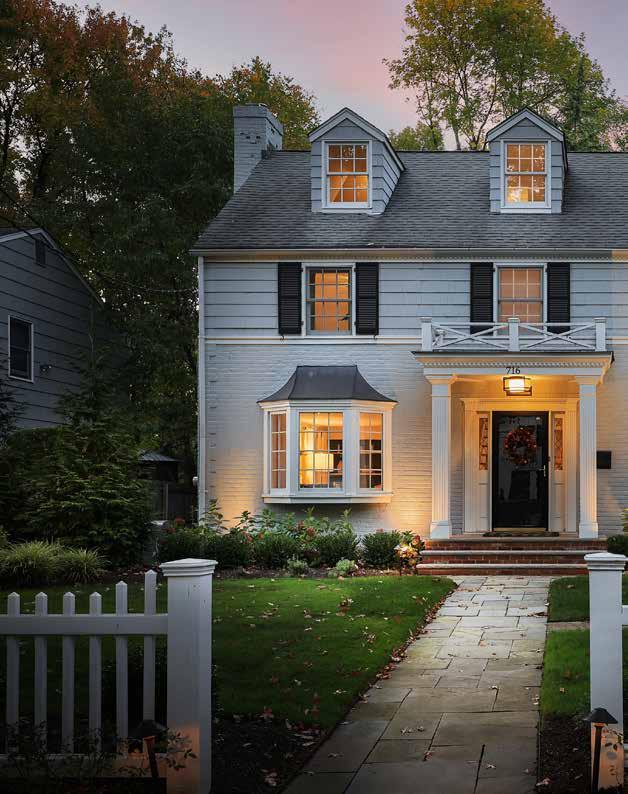
The Isoldi Collection represented the Seller
INVENTORY GROWTH SINCE 2023
Single-Family Luxury Homes: +40.4%
Attached Luxury Homes: +42.6%
PRICE APPRECIATION SINCE 2023
Single-Family Luxury Homes: +8.0%
Attached Luxury Homes: +16.5%
Source: The Institute for Luxury Home Marketing
eyeing homes with renovation potential. A growing number of Luxury Property Specialists are already noting increased interest in lower-priced properties that need work.
The National Association of Home Builders (NAHB) sees this shift playing out too. “Although the remodeling industry faces certain headwinds, favorable demographics and characteristics of the current housing stock will boost remodeling activity in 2025,” said NAHB Economist Eric Lynch3 earlier this year. “NAHB is forecasting residential remodeling activity to post a 5% gain in 2025, and a nominal gain of 3% in 2026.”
Lautz agrees: “Many consumers are locked into low mortgage rates and opting to tap their home equity for renovations rather than move.”
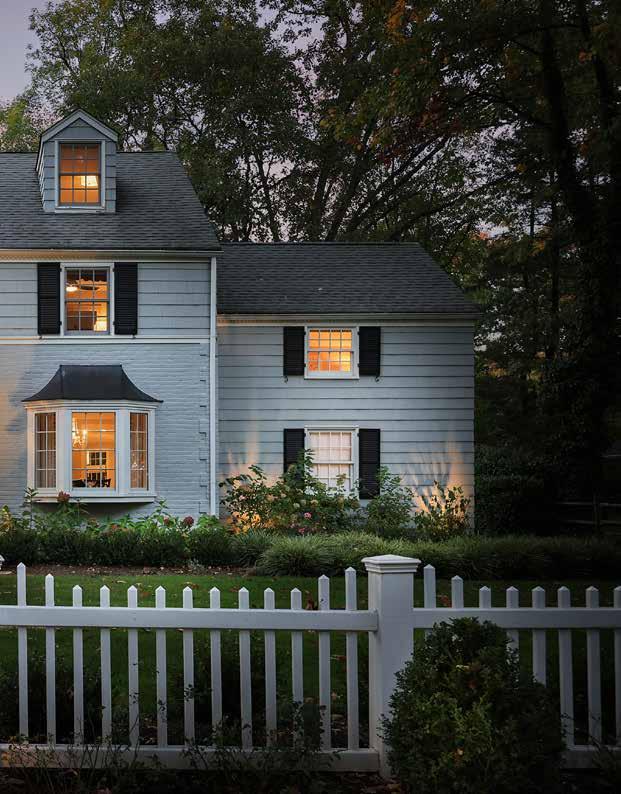
The Smart Buyer
This leads us to another emerging mindset in today’s market: the smart buyer.
“It all comes down to price,” says Brian Bogs of Coldwell Banker Realty in Newport Beach. “People either look for the property with the best value and invest money into it, or they purchase brand-new or turnkey properties.” Agents like Kate Bransfield with Coldwell Banker Realty in Santa Monica and Alan Levy with Coldwell Banker Realty in Calabasas report that this pattern is already unfolding in some of Southern California’s most expensive areas.
In other words, some savvy high-end buyers are starting to think strategically about where they can create value—even if it means taking on a project. As Patti J. Delgado with Coldwell Banker Realty in the Sacramento area notes: “Buyers are looking for ways to increase equity. Buying a property that needs renovation is a perceived way to accomplish their goal.”
“Savvy high-end buyers are starting to think strategically about where they can create value.”
Carol Wolfe with Coldwell Banker Realty has started to observe this trend in her market in The Woodlands area of Houston, Texas: “For the buyer who wants to stay in proximity to the suburbs and its amenities, there is very little room for new construction so older homes are becoming more desirable and offers depend on how much remodeling is needed.“
The trend appears to be driven as much by necessity in some markets as it is by bargain-hunters and smart “opportunity” buyers in others. “Smart buyers are in the wings waiting for the bottom or to get a deal,” says Oriel. Adds Carla Rayman Kidd of Coldwell Banker Realty in Sarasota, Florida: “Many luxury buyers are trying to get a 'deal' on a home that may have been sitting on the market for a longer period of time – trying to take advantage of the current economic conditions of the world.”
Most affluent buyers remain highly selective and favor turnkey homes, but if prices and inventory keep rising, it could prompt a broader shift toward a more strategic, value-focused mindset.
BEHAVIOR SPLITS BETWEEN HIGH-NET-WORTH AND ULTRA-HIGH-NET-WORTH INDIVIDUALS
As Lautz put it: “We’re seeing real strength at the upper end of the market – cash purchases are at an all-time high, while first-time buyers are at an all-time low. It’s a tale of two markets: some buyers are struggling to break in, while others are leveraging record home equity to make seamless, strategic moves.”
“It’s a tale of two markets.”
— JESSICA LAUTZ
While the “no-compromise buyer” topped the list of current trends, Luxury Property Specialists also highlighted a notable second trend: differing behaviors between aspirational high-net-worth buyers and ultra-luxury buyers. Several agents reported increased activity in the ultra-luxury (top 5%) segment, where cash is more prevalent and confidence remains higher.
Meanwhile, aspirational or high-net-worth buyers – often reliant on financing or driven by long-term lifestyle goals – are adopting a more cautious stance in light of economic uncertainty.
Per Chesterfield, “ultra-high-net-worth buyers tend to be much more strategic.” He adds that they’re typically “more globally minded, with larger investments exposed to geopolitical shifts. High-net-worth buyers, on the other hand, are often more focused on immediate, practical concerns – like interest rates, inflation,
and taxes. They’re thinking in terms of their own financial world, not the global one.”
Chesterfield also adds that there are notable differences between high-net-worth individuals who have grown up with wealth versus those who have built it from the ground up. “Those from affluent backgrounds tend to be more focused on lifestyle,” he says. “They value a greater diversity in the choices they make. Someone with a parent who has a net worth of $50 million is typically not concerned about pensions or long-term financial security. They also tend to be more comfortable with risk. In contrast, individuals who have accumulated wealth themselves are generally more cautious and risk-averse, often prioritizing financial preservation over lifestyle-driven decisions.”
Is a Gap Emerging Between the Top 10% and Top 5% of the Market?
Anecdotal reports of a growing divide between the mass luxury and ultra-luxury markets – roughly defined as the top 10% and top 5% – began surfacing in late April and early May, following renewed stock market volatility.
Yet when we turned to the data – which typically trails real-time sentiment by about a month or more – we found no significant nationwide performance gap between the top 10% and top 5% during the first five months of 2025 compared to the same period in 2024. Per The Institute's data, the most notable variations appeared between property types, especially in sales performance for single-family homes versus attached residences (previously covered):
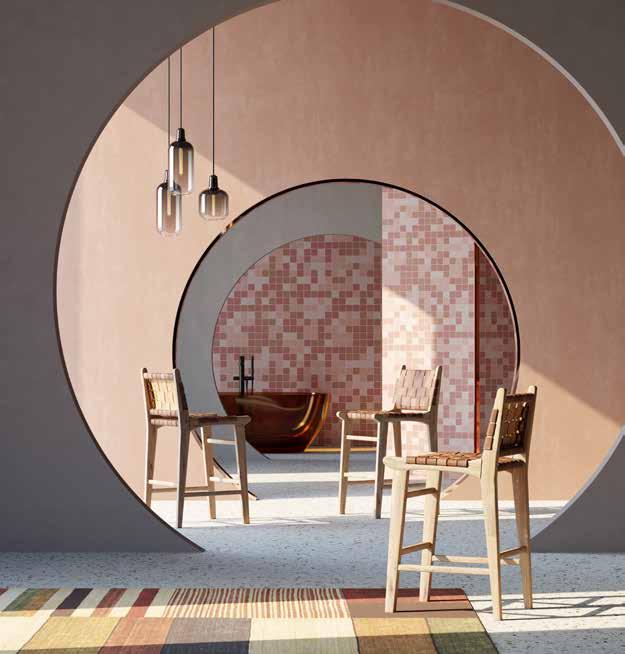
Outside these high-performing enclaves,4 however, the ultraluxury segment has yet to decisively outpace the broader luxury market – at least as the data tells it. Elevated mortgage rates, lingering economic uncertainty, and pricing pressures continue to keep many would-be luxury buyers and sellers on the sidelines – especially those outside marquee markets.
Source: Institute for Luxury Home Marketing
When comparing the top-performing tier to the broader luxury market, differences have been marginal – except in a handful of powerhouse markets. In Los Angeles County, for instance, the number of top-tier homes sold between February 1 and May 1, 2025, jumped 29% year over year, including a 33% spike in Beverly Hills alone. Manhattan saw a 21% rise in luxury home sales, Miami-Dade was up 48%, Palm Beach surged 50%, and Aspen recorded a 44% increase.
• Top-tier activity has been strong in select marquee markets.
• Nationwide, the top 5% and top 10% segments have tracked similarly.
• Ultra-luxury is thriving – but it’s not universal.
Selected Markets (February-May 1 YOY Sales):
L.A. County: +29% (Beverly Hills: +33%) Manhattan: +21%
Miami-Dade: +48%
Palm Beach: +50%
Aspen: +44%
Source: Nasdaq.com
Taking the long view, Luxury Property Specialists are looking beyond immediate trends to identify deeper forces likely to shape the high-end market over the next 12 to 24 months.
1. Fewer Speculative Buys
Economic uncertainty is reining in lifestyledriven and impulsive purchases.
2. The Next Generation Arrives
Younger buyers – many through inheritance –are entering the luxury space.
3. Practicality Over Perks
Lifestyle preferences are taking a backseat to smart, value-based decisions.
4. Move-Up Momentum
Equity-rich sellers are making their first move into the luxury tier.
5. Fixer-Upper Appeal Could Rise
Budget-conscious buyers are gravitating toward lower-priced homes with renovation upside.
The gaps between the wealth tiers become more clear when you look at how their motivations have shifted more recently. Per Chesterfield, “When there is uncertainty, people are thinking sharper about what affects them directly. The ‘softer’ lifestyle attractions often take a backseat to more practical considerations.”
A majority of Luxury Property Specialists agreed with him. A combined 47% of them said that they expected economic uncertainty to reduce speculative purchases and/or purchases based on softer lifestyle considerations as buyers shifted their priorities to more practical concerns such as resale potential and market liquidity, local tax structure, insurance coverage and costs.
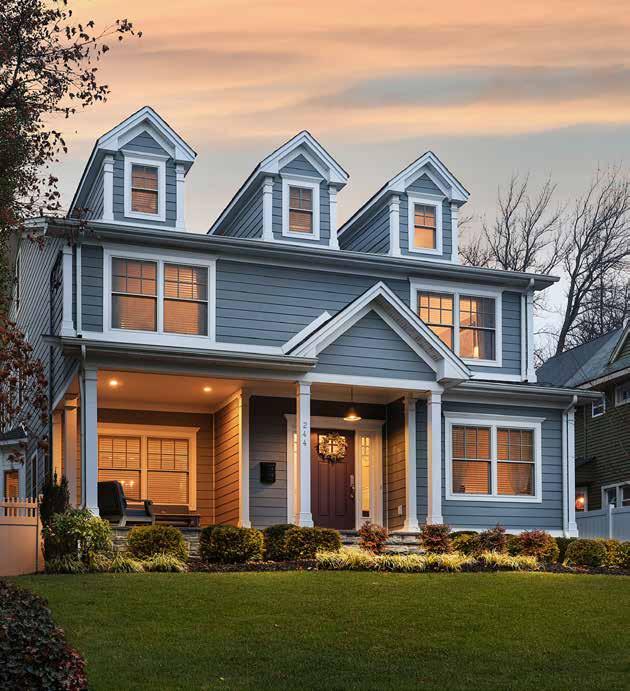
47.0%
of surveyed Luxury Property Specialists believe economic uncertainty will curb speculative purchases and make practical considerations more important than lifestyle preferences.
“People are very hesitant to move forward especially if it's just a move for a better lifestyle,” says Anne Frewen with Coldwell Banker Realty in Westport. “They figure they can make do until the market stabilizes. Many people in finance are feeling very insecure with the world right now as their work becomes increasingly hectic and stressful. They are taking a measured and cautious approach at home.”
Buyers appear to be evaluating long-term value and risk with greater scrutiny. As Sarkis has observed in her Rancho Santa Fe market: “The wealthy are still buying – but we’re seeing a shift. The ultra-wealthy are consolidating, opting for one or two key properties instead of maintaining four or more, typically prioritizing a tax haven and a lifestyle-driven location.” She sees this largely being driven by economic headlines at the moment, but also by younger families who are starting to enter the market for the first time. They’re more likely looking for long-term value in addition to lifestyle amenities – rather than fast high-yield investment properties. “Buyers at this level are watching the headlines, but their decisions remain rooted in confidence and long-term vision,” she says. “Frivolous purchases are rare. Buyers are discerning, negotiating more, and prioritizing quality. If a home is turnkey and in a prime location, it still moves.”
“Frivolous purchases are rare. Buyers are discerning, negotiating more, and prioritizing quality.”
— MELINDA DAVALA SARKIS
That said, high-net-worth individuals’ motivations are far from monolithic – and market dynamics can vary widely by region. In ultra-prime markets like New York, lifestyle remains a powerful motivator. “For many buyers, a New York City luxury home serves as an additional residence for their household – not just a place to enjoy today, but a long-term asset for younger family members or future heirs,” says Saturno-Sanjana. (We’ll dive deeper into the generational wealth transfer later.)
As Chesterfield explains: “They may be drawn to a location for the weather or lifestyle perks – but they’re not rushing into speculative, unproven markets. Today’s luxury buyers are saying practicality and lifestyle can be married. But if it comes down to investment value versus lifestyle right now, investment value may tip the scale.”
Home equity is soaring at historic levels as housing prices reach new highs. That’s creating a new pool of first-time luxury buyers, known as “the move-up luxury buyer.”
"Home prices continue to increase, which means homeowners are accumulating a large amount of housing equity," says Lautz. "Move-up buyers may have once thought they were not luxury buyers, but now find themselves in that market."
Surveyed Luxury Property Specialists ranked this shift among the top five most important future trends to watch. “Prices have increased, forcing move-up buyers to now become luxury home buyers – especially if they want a newer home,” says Georgie Smigel of Coldwell Banker Realty in Cranberry Township, Pennsylvania.
Suzanne L. Goldstein with Coldwell Banker Realty has observed a similar pattern in Atlanta’s top luxury enclave, Buckhead: "As home equity has increased, buyers have more to invest in their next home and phase of life."
The numbers are starting to paint a clear picture. Based on NAR

figures published by Realtor.com in March 2025, home prices have risen 47% nationwide over the past five years – with even steeper gains in states like Maine, Florida, Montana, Vermont, and New Hampshire, where prices have climbed more than 68%. These surges have simultaneously expanded the $1 million-plus housing market, pushing more homes into the luxury category. In fact, nearly 300,000 homes sold above the $1 million mark over the past year – up from 275,000 the year before, according to Realtor.com data.5
That price appreciation is also translating into a significant boost in equity. NAR data shows that for every 1% increase in home prices, roughly $350 billion in housing equity is created. “That means a gain of nearly $1.3 trillion in home value appreciation at a time when the stock market is undergoing a correction,” noted NAR Chief Economist Lawrence Yun during the association’s quarterly Real Estate Forecast Summit6 in March.
“That translates to nearly $1.3 trillion in appreciation at a time when the stock market is undergoing a correction.”
— LAWRENCE YUN
This influx of equity is changing who qualifies as a luxury buyer. Broader wealth shifts are also reinforcing this trend. The Pew Research Center7 reports that the share of adults in the upperincome tier in the U.S. has grown from 14% in 1971 to 21% in 2021,


even as the middle class has shrunk. At the same time, incomes have risen more dramatically for higher-income households – 69% compared to 50% for middle-income and 45% for lower-income earners.
Source: Pew Research Center
Globally, wealth continues to expand. The UBS Global Wealth Report 20258 shows that total global wealth grew by 4.6% in 2024, following a 4.2% gain in 2023, with the Americas accounting for the largest share of this growth. The report also found that the number of millionaires worldwide rose by 1.2% in 2024 — an increase of more than 684,000 people compared to the previous year. The U.S. alone added over 379,000 new millionaires — more than 1,000 every day — underscoring how rising wealth continues to broaden the pool of potential luxury buyers.
The report also highlights the rise of a growing but often overlooked segment UBS calls the “Everyday Millionaire”: individuals with investable assets between $1 million and $5 million. Their
numbers have more than quadrupled since 2000, reaching about 52 million globally by the end of last year. Collectively, this group now holds roughly $107 trillion in wealth, closing in on the $119 trillion held by those with over $5 million in assets. Much of this growth has been fueled by rising real estate values and favorable exchange rate effects, the report noted.
INHERITED WEALTH WILL CHANGE THE REAL ESTATE GAME
The face of wealth is changing – and with it, the priorities of those entering the high-end property market. While Baby Boomers still dominate the luxury buyer pool, the early signs of a generational shift are already taking hold.
What’s been called “the greatest wealth transfer in history” is well underway. Cerulli Associates9 estimates that nearly $124 trillion in assets will change hands by 2048. And for Luxury Property Specialists on the ground, the effects are already beginning to surface.
About 43% of surveyed Luxury Property Specialists report either a slight or notable increase in activity among younger buyers, particularly Millennials and Gen Z.
These younger generations are bringing a new set of property preferences with them. “These buyers often prioritize lifestyle, sustainability, and digital connectivity, which could shift investment toward modern, amenity-rich homes in desirable urban and resort locations,” says Kim Shupe of Coldwell Banker Upchurch Realty in Georgia and Coldwell Banker Premier Properties in Florida.
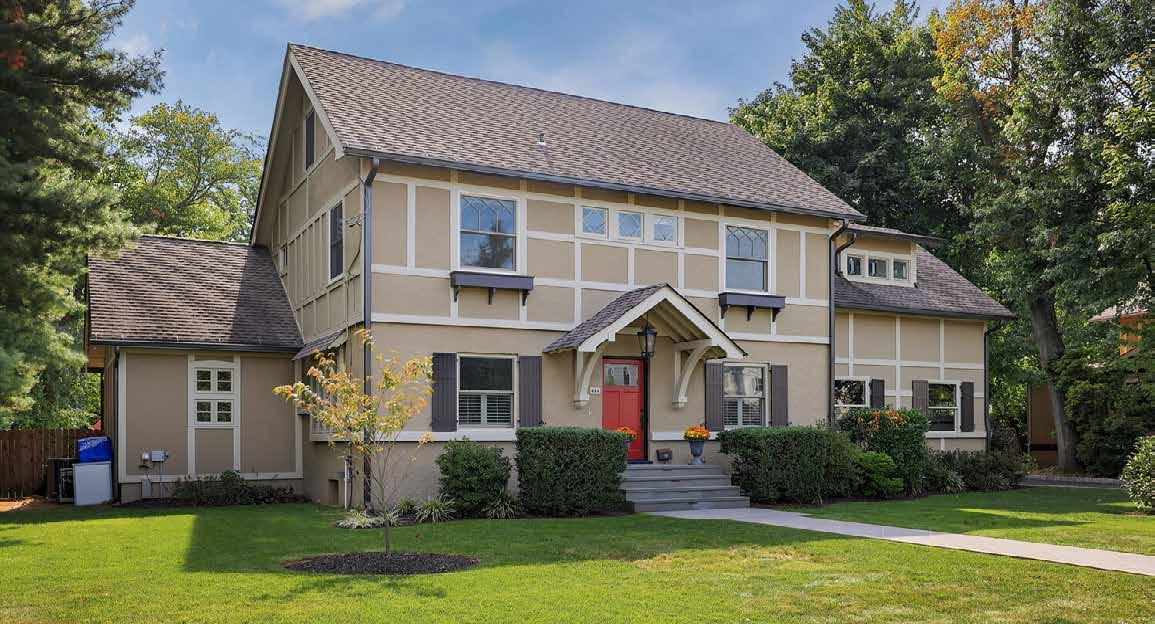
Slight or notable increase in younger buyers (Millennials and Gen Z)
Slight or notable increase in buyers aged 45 and above (led by Gen X)
No significant change
Source: Coldwell Banker Global Luxury® Property Specialist Survey 2025
Where older generations may have prioritized classic estates or second homes with traditional layouts, younger buyers are looking for homes that align with their values and modern pace of life – new construction or turnkey condition, tech-enabled security systems, EV charging, solar power, spa-like bathrooms, and wellness-forward amenities like home gyms, saunas, and
meditation gardens. As Tom Schwenk of Coldwell Banker TGRE in Galveston, Texas, has observed, “Transfer of wealth is going to be big, and it is being transferred to a generation who know what they want, and I don’t believe they will want to do a lot of renovations. Appearances matter so those luxury properties that have extras are going to be king.”
Additionally, Shupe believes cash purchases may increase, “insulating the luxury segment even further from interest rate volatility and economic fluctuations.”
Where the Money’s Headed
Millennials and Gen Z are forecasted to be the fastest-growing drivers of global consumer spending over the next decade. According to the Spend Z report by NielsenIQ and World Data Lab,10 Gen Z in particular is emerging as a powerful economic force, expected to dominate global expenditure growth as they inherit wealth and build independent capital through new industries.
Women are a major part of this shift. Per McKinsey & Co,11 women are projected to control $30 trillion in wealth by 2030, a generational transfer that is already reshaping real estate trends. According to Wealth-X figures as reported in The Trend Report 2025, women with a net worth of over $5 million now own 15.2% of U.S. luxury real estate and 13.19% globally.
The UBS Global Wealth Report 202512 also projects that an estimated $83 trillion in wealth will change hands over the next 20 to 25 years, with women poised to benefit significantly from both intergenerational and spousal transfers, including about $9 trillion expected to shift between spouses alone.
“Single women are outpurchasing single men two to one across
share of population (2024) generation global spending (2024)
Gen Alpha
Gen Z
Millennials
Gen X
Baby Boomers
Greatest and Silent Genera on
Source: NielsenIQ and World Data Lab
all demographics in the general real estate market,” says Lautz. “This trend is likely to carry into the luxury segment. Women who have built equity early are well-positioned to move into higher-end homes.”
Still, Lautz cautions that the generational shift won’t happen overnight. “Baby Boomers remain the dominant buyer demographic and currently hold the most wealth. The wealth transfer will be gradual.”
Chesterfield also stresses that generational wealth transfer is a process, not an event. “For many wealthy families, especially in the ultra-wealthy category, the process of transferring generational wealth has been underway for years.”
Among the high-net-worth segment, however, the story is a bit
different. Many are just beginning to think seriously about wealth transfer. “Some may not yet consider themselves ‘wealthy enough’ to create a formal plan, but that perception is shifting as property values rise,” says Chesterfield. “As they begin to structure assets for the next generation, we’re likely to see a surge in inherited properties – particularly primary homes. That’s where the most significant demographic change in luxury real estate may come.”
The volatility of 2025 has made forecasting more challenging, but not impossible. Luxury real estate continues to evolve alongside shifting financial conditions, generational change, and cultural values. Pragmatism is now shaping buyer behavior, as real estate holds steady as a long-term pillar in wealth strategy.
As buyers grow more selective and strategic, and sellers adjust their expectations, one thing is clear: “smart luxury” is the mindset to watch. Today’s affluent clients still expect exceptional quality and design, but they also demand more from their real estate choices. Their next purchase must fit their lifestyle and make financial sense, offering lasting value and balancing practical matters like resale potential, maintenance, insurance costs, and taxes. Luxury real estate professionals who understand and embrace this evolving ethos will stay ahead as the market shifts toward this new reality. At a time when many affluent buyers are seeking stability and proven investments, those agents who can guide them to the smart opportunities will continue to earn their trust and confidence.
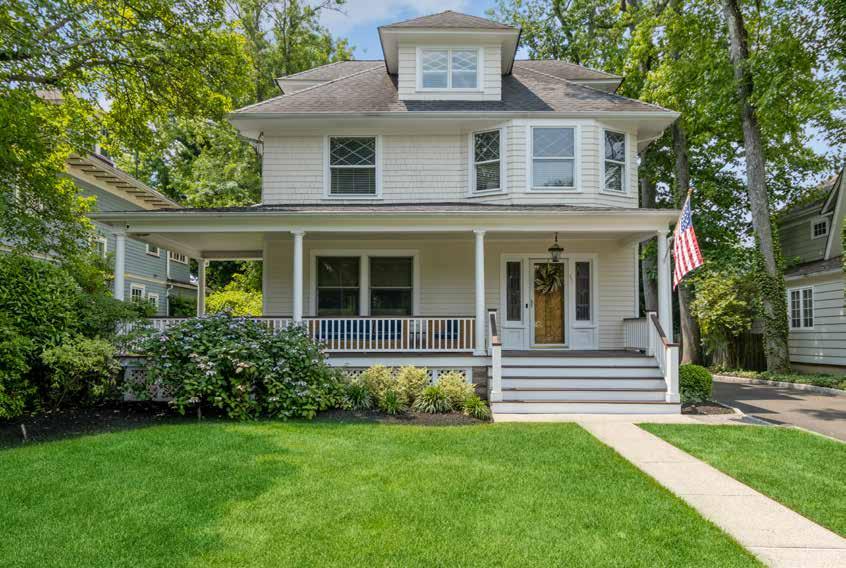


After more than 30 years, Frank Isoldi's commitment to innovation and providing a personalized customer service experience has now established The Isoldi Collection as a major influence in Westfield, Scotch Plains, Mountainside and the surrounding environs.
Not content to merely list properties, The Isoldi Collection uses an exclusive network, sophisticated marketing and every available tool to seek out the right buyers for their clients’ properties and the perfect homes for their buyers. Always professional, Frank Isoldi is also aggressive, resourceful, innovative, and stylish, as proven in his comprehensive approach of offering real estate in multiple locations throughout Westfield, Scotch Plains, Mountainside and the surrounding environs.
This strategy has set Frank apart in the market and continues to drive his success. In 2024 Frank achieved an average sold price to asking price of 101% with homes selling in an average of 10 days.
ADDRESS LOCATION
1600 Cooper Road
200 Woodland Avenue
220 E Dudley Avenue
785 Lenape Trail
224 Watchung Fork
14 Kimball Circle
544 Lawrence Avenue
725 Highland Avenue
13 Breeze Knoll Drive
153 Wild Hedge Lane
415 Hillside Avenue
1410 Rahway Road
585 Highland Avenue
148 Kent Place Boulevard
19 Carol Road
320 Summit Avenue
6 Eton Row
244 Edgewood Avenue
644 Carleton Road
102 Golf Edge Drive
21 Pheasant Lane
940 Minisink Way
218 Golf Edge Drive
315 Jefferson Avenue
36 Scudder Road
607 Lawrence Avenue
Scotch Plains, NJ
Westfield, NJ
Westfield, NJ
Westfield, NJ
Westfield, NJ
Westfield, NJ
Westfield, NJ
Westfield, NJ
Westfield, NJ
Mountainside, NJ
Westfield, NJ
Scotch Plains, NJ
Westfield, NJ
Summit, NJ
Westfield, NJ
Summit, NJ
Scotch Plains, NJ
Westfield, NJ
Westfield, NJ
Westfield, NJ
Scotch Plains, NJ
Westfield, NJ
Westfield, NJ
Westfield, NJ
Westfield, NJ
Westfield, NJ
Represented the listing for the highest two sales in Scotch Plains per the MLS
One of the highest closed sales in Westfield
$3,646,750
$3,500,000
$3,500,000
$3,400,000
$2,735,000
$2,675,000
$2,650,000
$2,600,000
$2,600,000
$2,558,500
$2,550,000
$2,550,000
$2,530,000
$2,501,000
$2,376,500
$2,305,000
$2,300,000
$2,250,000
$2,250,000
$2,200,000
$2,199,000
$2,150,000
$2,050,000
$2,000,000
Seller
Seller
Seller & Buyer
Seller
Seller
Seller & Buyer
Seller
Seller
Seller
Seller
Seller & Buyer
Seller
Seller
Seller
Seller
Buyer
Seller
Seller & Buyer
Buyer
Seller
Seller
Seller
Seller
Seller
Seller
Buyer
The Coldwell Banker Global Luxury® program collaborated with their Luxury Property Specialists (through the means of a survey), the Institute for Luxury Home Marketing, National Association of Realtors and Barton Consulting LLC to provide insights into wealth, real estate, property investment, luxury spending preferences and emerging trends.
For The Mid-Year Report 2025, the Institute for Luxury Home Marketing analyzed the data for the top 10% of 126 U.S. markets. Data contained is from January 1, 2023, to May 31, 2025, and has been computed by the Institute for Luxury Home Marketing’s data research partner and shared with Coldwell Banker Global Luxury® and based on information attained both privately and publicly. The Top 10% is defined as a property in the Top 10% of any given market. These homes (in terms of inventory, solds, or list prices), match or exceed the 90th percentile sold price for homes sold on a monthly basis from January 1, 2023 to May 31, 2025. Closed sales reported later than the monthly analysis period were not included. Property-specific sales records were standardized, inaccurate sale prices were corrected when necessary and all duplicate records were manually excluded. As a result, statistics available via the source data providers may not correlate to this analysis.
Data is then represented monthly, over five months and yearly throughout the report, using medians, averages, totals, percentages, and ratios. However, unless otherwise specified, statistics typically presented in this report represent both the monthly median and the average of monthly medians of the respective data. Market Status is an analysis of Sales Ratio and represents market speed and market type: where the sales ratio is 12% or less, it is a buyer’s market. If it is greater than 12% and less than 21% it is a balanced market. Over 21% it is a seller’s market. If greater than 100%, MLS data reported previous month’s sales exceeded the remaining inventory pulled at the end of the month.
• Ultra High Net Worth individuals (UHNWI) are defined as people who have a net worth of 30 million dollars or more.
• Very High Net Worth individuals (VHNWI) are defined as people who have a net worth of five to 30 million dollars.
• High Net Worth Individual (HNWI) is defined as people who have a net worth of one to five million dollars.
IN REVIEW 2025 | PAGES 15 - 17
1. https://edition.cnn.com/2025/05/19/homes/home-construction-prices-trump-tariffs
MARKET SYNOPSIS | PAGES 24 - 31
1. https://www.bloomberg.com/news/newsletters/2025-05-27/us-consumer-confidence-jumps-after-us-china-trade-truce-eveningbriefing?cmpid=eveus&utm_medium=email&utm_source=newsletter&utm_term=250527&utm_campaign=eveus
TREND OUTLOOK | PAGES 36 - 49
1. https://am.jpmorgan.com/content/dam/jpm-am-aem/global/en/insights/market-insights/guide-to-the-markets/mi-guide-to-themarkets-us.pdf
2. https://www.realtor.com/news/trends/trump-us-tariffs-luxury-real-estate-housing/
3. https://www.nahb.org/news-and-economics/press-releases/2025/02/remodeling-market-poised-for-growth-in2025#:~:text=“Although%20the%20remodeling%20industry%20faces,in%202026%2C”%20said%20Lynch
4. https://www.nasdaq.com/articles/6-luxury-real-estate-markets-where-ultra-rich-are-buying-2025#:~:text=According%20to%20data%20 compiled%20by%20Miller%20Samuel%2C,between%20Feb.%201%20and%20May%201%2C%202025.
5. https://www.realtor.com/news/unique-homes/million-dollar-home-sales-growing/
6. https://www.nar.realtor/magazine/real-estate-news/sales-marketing/real-estate-pros-can-discuss-home-equity-to-motivate-buyerssellers
7. https://www.pewresearch.org/short-reads/2022/04/20/how-the-american-middle-class-has-changed-in-the-past-five-decades/
8. https://www.wealthbriefing.com/html/article.php/global-wealth-rose-in-2024%2C-us-dominates-trend--ubs
9. https://www.pewresearch.org/short-reads/2022/04/20/how-the-american-middle-class-has-changed-in-the-past-five-decades/ 10. https://www.visualcapitalist.com/visualized-global-spending-power-by-generation/ 11. https://www.mckinsey.com/industries/financial-services/our-insights/women-as-the-next-wave-of-growth-in-us-wealth-management 12. https://www.wealthbriefing.com/html/article.php/global-wealth-rose-in-2024%2C-us-dominates-trend--ubs
©2025 Coldwell Banker. All Rights Reserved. Coldwell Banker and the Coldwell Banker logos are trademarks of Coldwell Banker Real Estate LLC. The Coldwell Banker® System is comprised of company owned offices which are owned by a subsidiary of Anywhere Advisors LLC and franchised offices which are independently owned and operated. The Coldwell Banker System fully supports the principles of the Fair Housing Act and the Equal Opportunity Act. This report was compiled using the data platform of the Institute for Luxury Home Marketing. Data is deemed reliable but not guaranteed for accuracy. The information contained herein has been compiled together for informational purposes. The Coldwell Banker® brand is not making any recommendations for action based on the data within this report. Readers are encouraged to engage with their appropriate legal, accounting and professional counsel before implementing any suggested actions. The Coldwell Banker® brand, the Institute for Luxury Home Marketing and Wealth-X have no liability for errors, omissions or inadequacies in the information contained herein or for interpretations thereof and shall not be held liable for any claims or losses that may rise from the implementation of the data in this report. The data is subject to change at any time.

